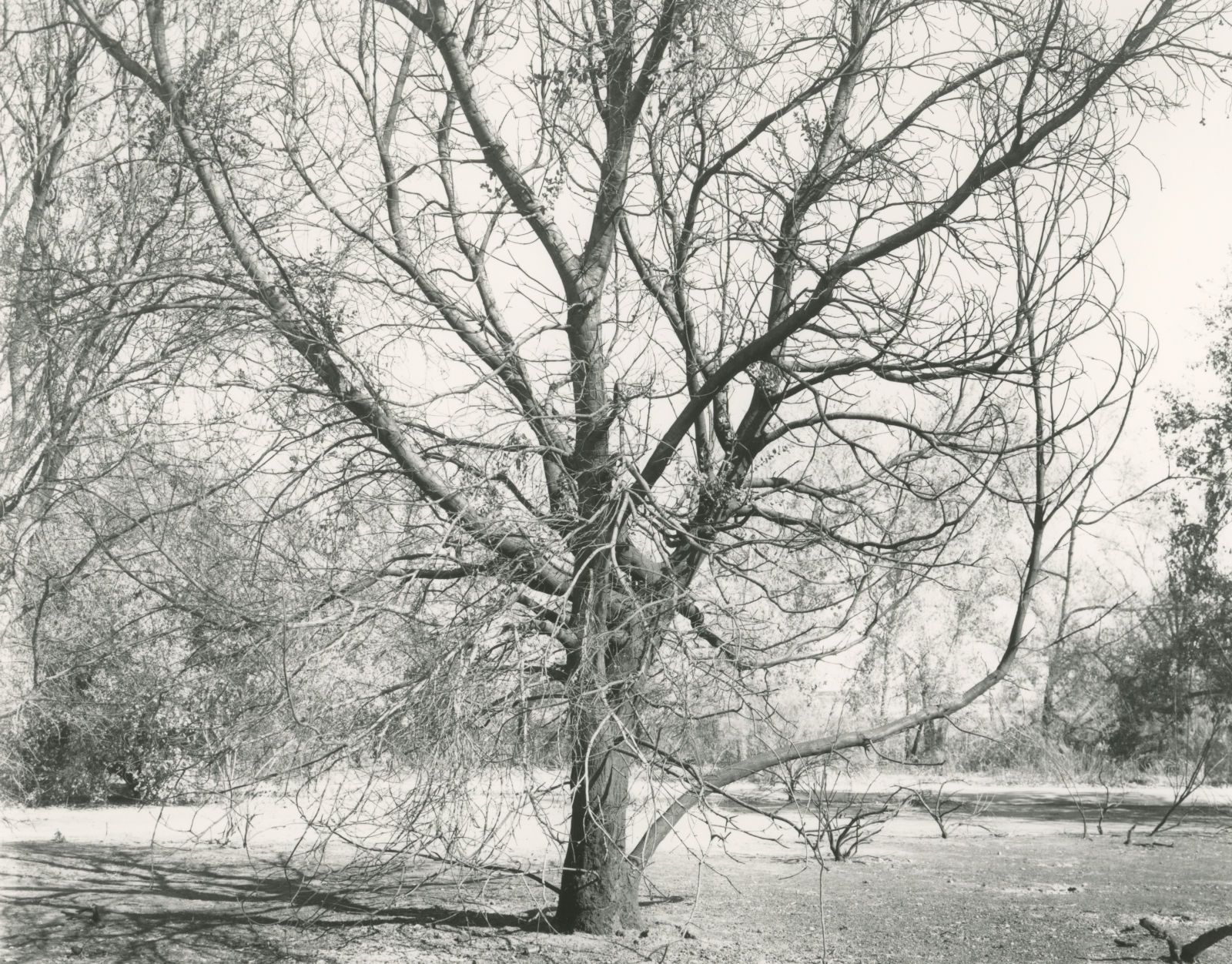
Burnt Tree: Sepulveda Wildlife Refuge #7, 2021
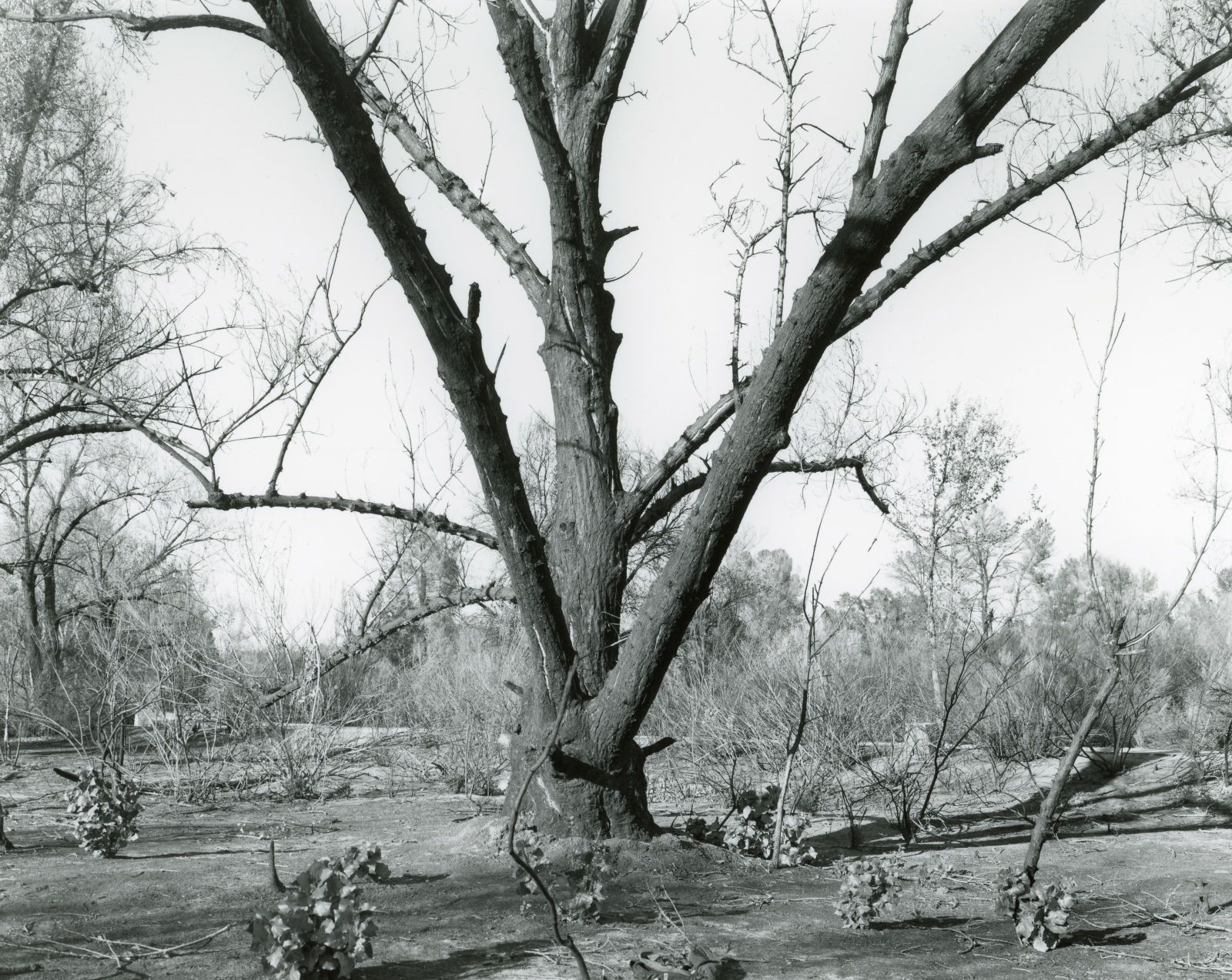
Burnt Tree: Sepulveda Wildlife Refuge #8, 2021
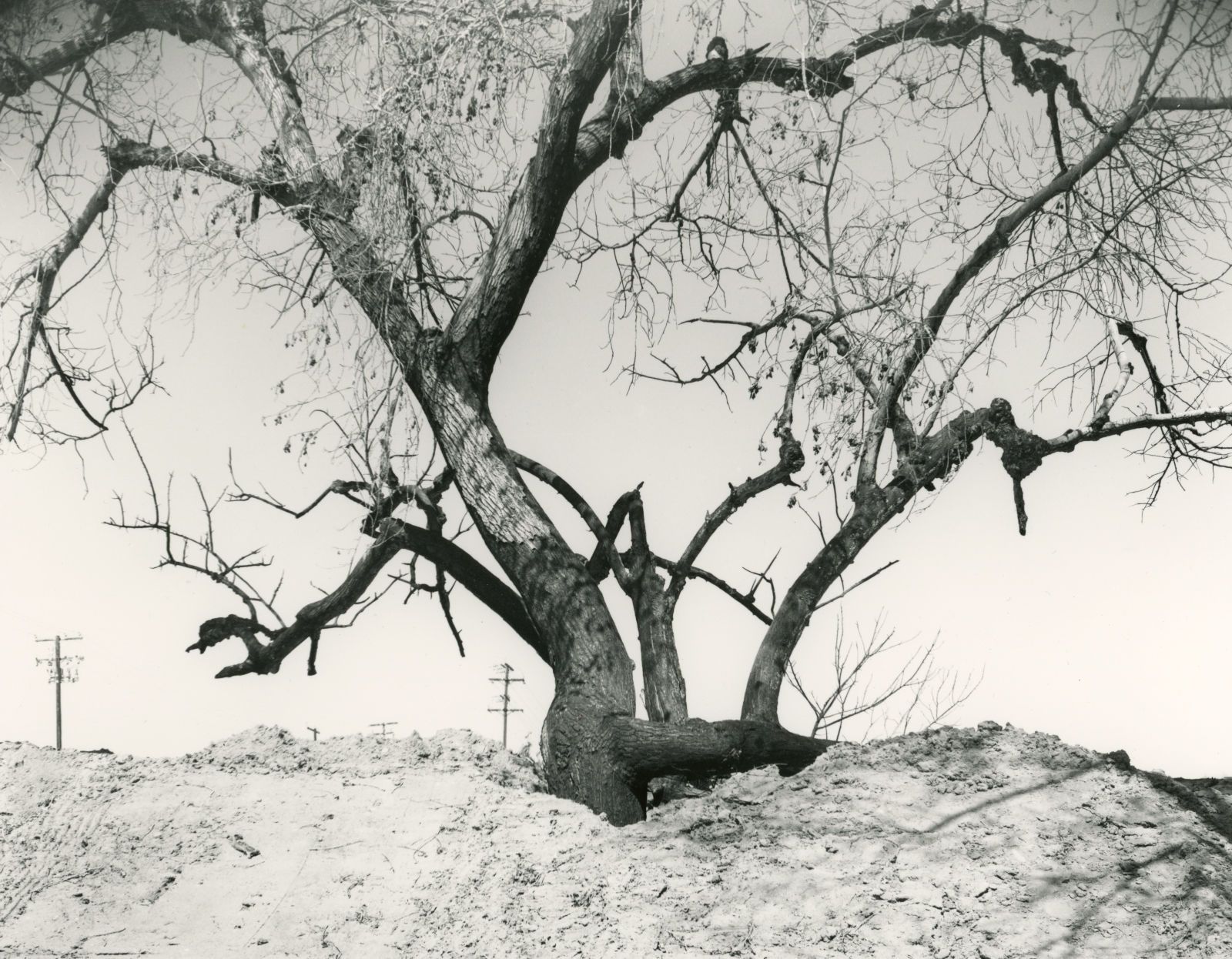
Burnt Tree: Victorville #1, 2015
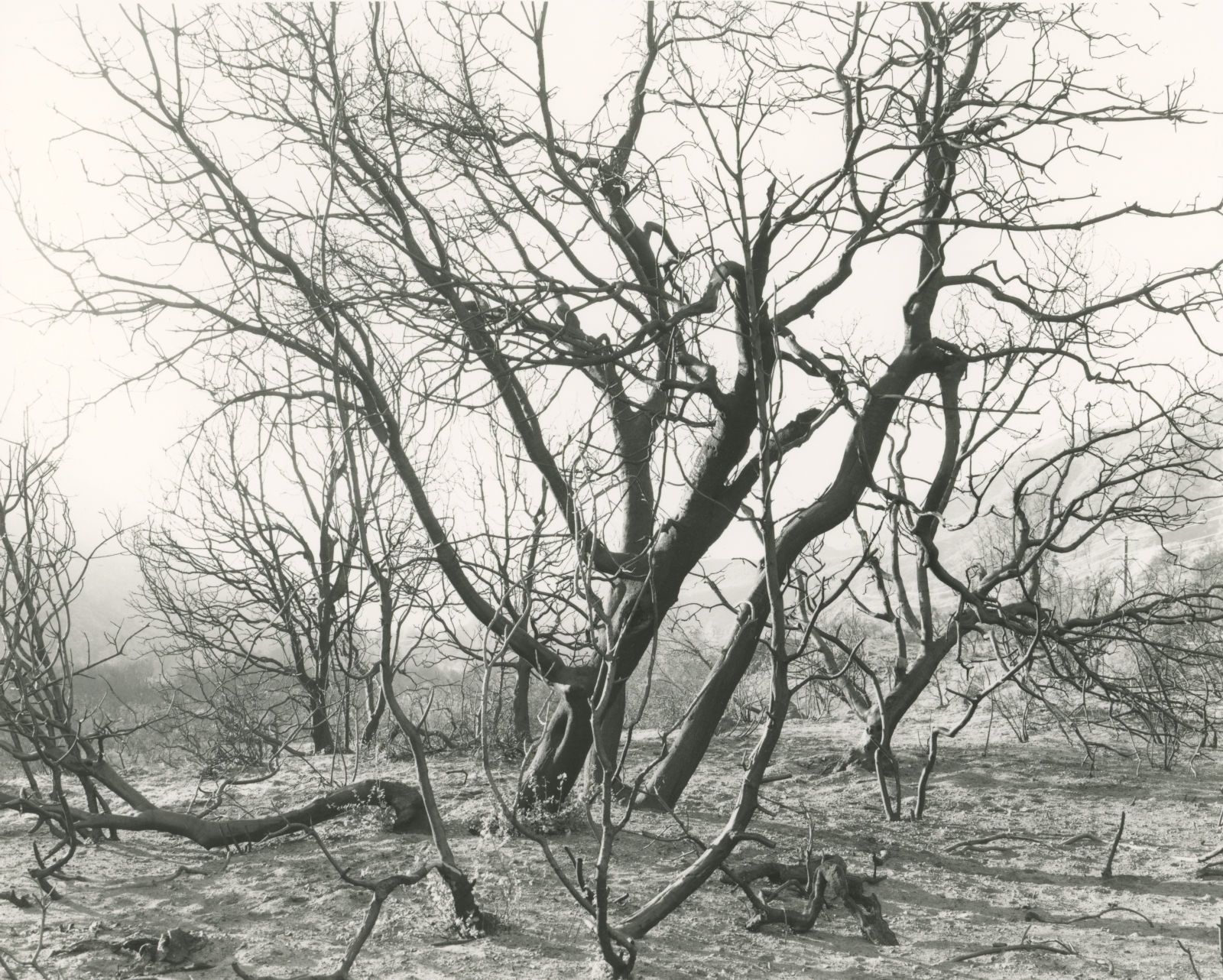
Burnt Tree: San Gabriel Mountains #3, 2021
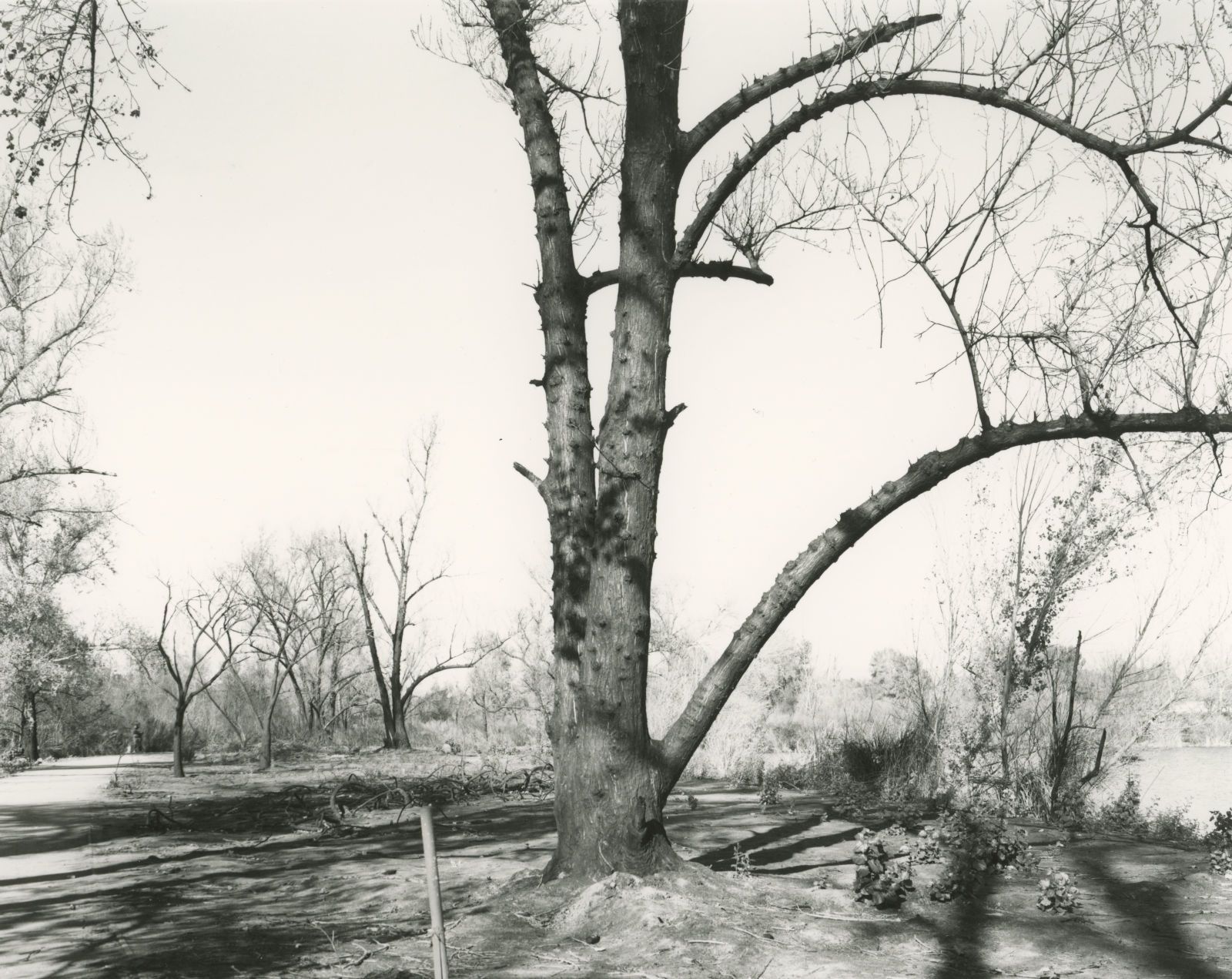
Burnt Tree: Sepulveda Wildlife Refuge #9, 2021
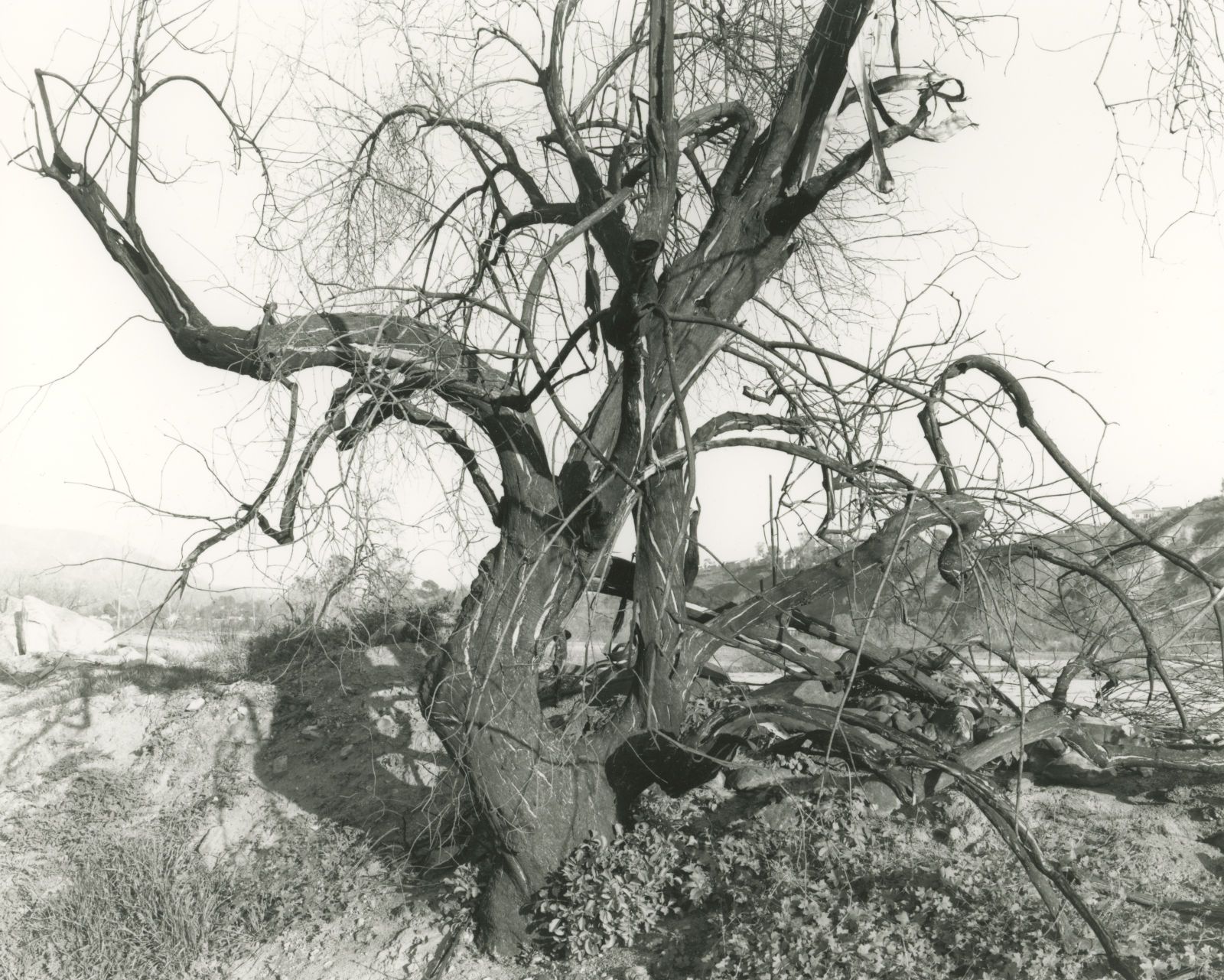
Burnt Tree: Big Tujunga Wash #10, 2018
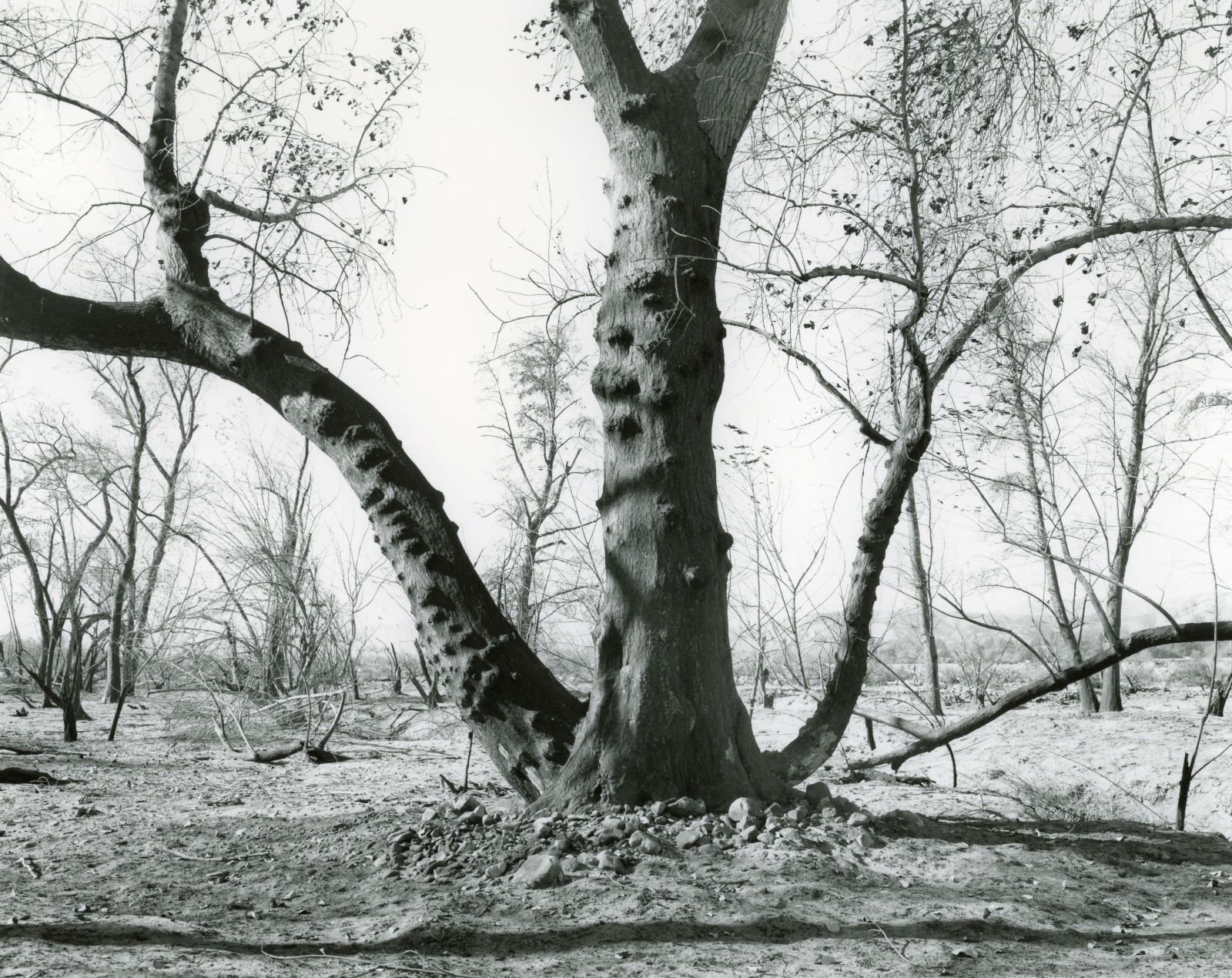
Burnt Tree: Verdugo Mountains #8, 2018
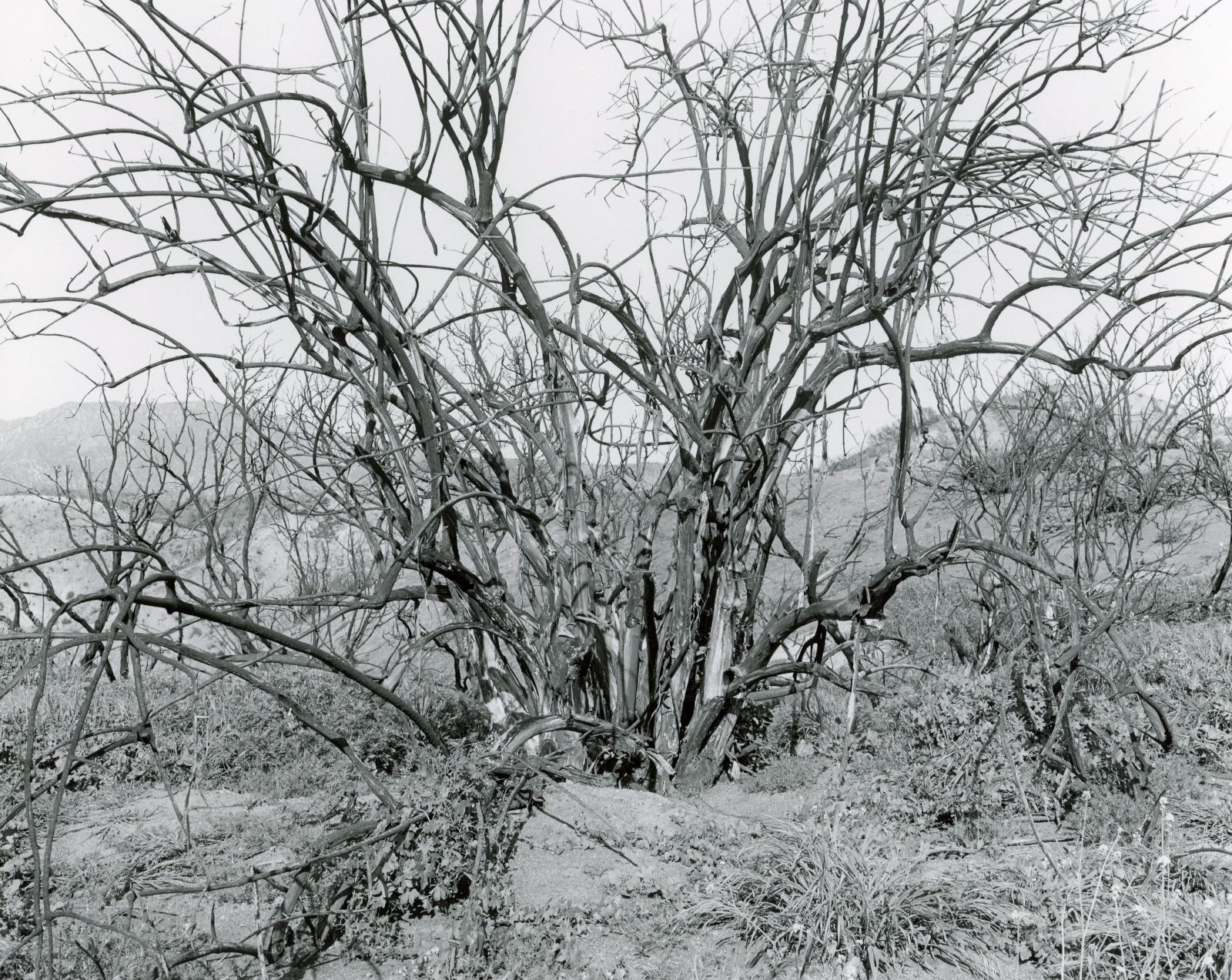
Burnt Tree: Big Tujunga Wash #9, 2018

Burnt Tree: San Gabriel Mountains #5, 2021
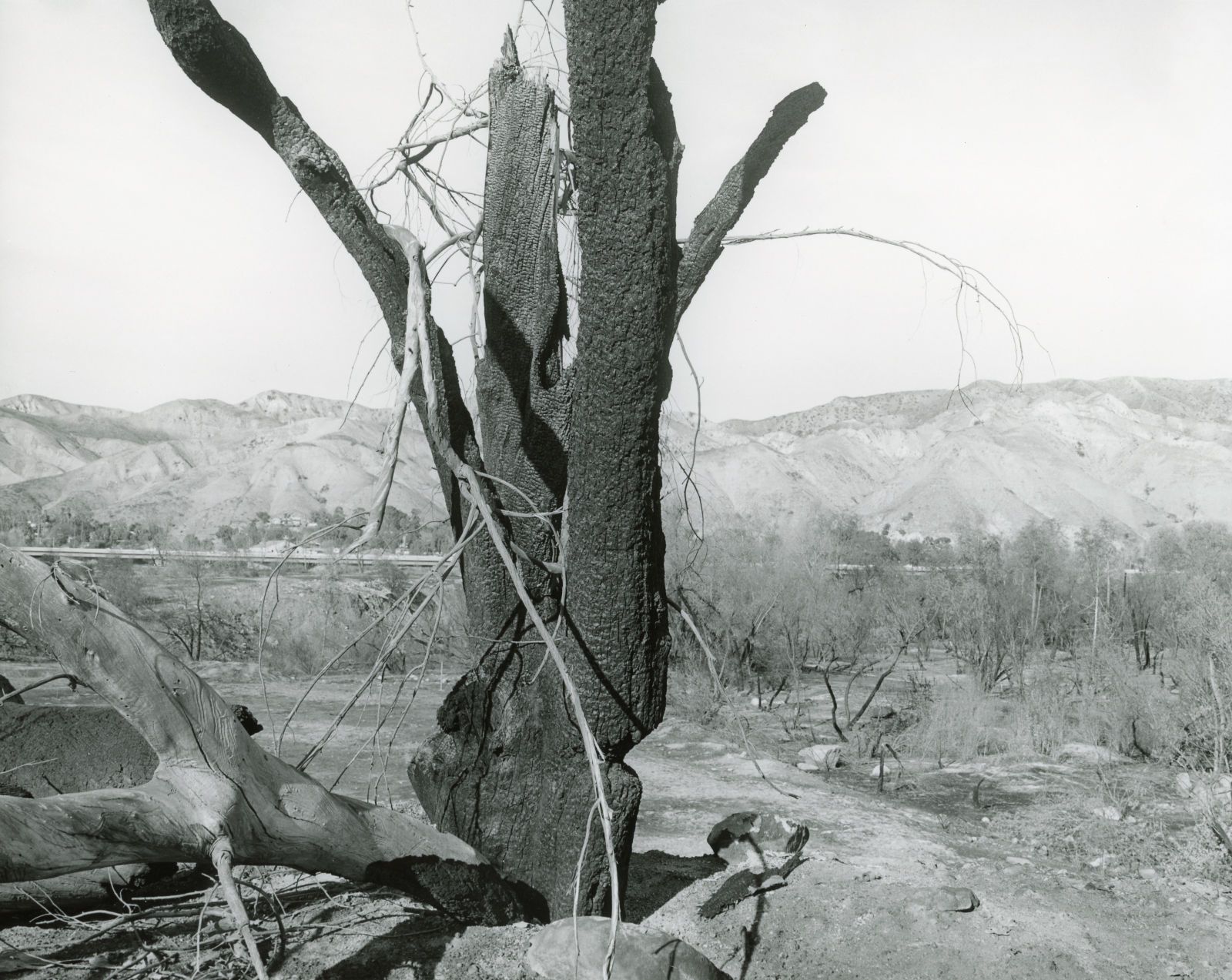
Burnt Tree: Big Tujunga Wash #12, 2018
In Southern California, trees signify: aesthetics, economics, semiotics. With the exception of the mountains and riparian zones, most of the trees in the Los Angeles area were planted.
Trees burn.
Southern California has always burned: fire is an integral part of its ecology. Yet each year is hotter and drier than the previous one, and the fires grow in both intensity and frequency. Carelessness, poor planning, drought and climate change are all contributing factors.
Lightning strikes, poorly maintained power lines and infrastructure, cooking fires at homeless camps. Decades of fire suppression increase fuel for when the fires inevitably come.
These photographs were made in the months after fires large and small, in both wild and cultivated areas within or adjacent to the metropolis.
Burnt trees are the result of both naturally recurring phenomena and human activities. They also offer a hint of a possible future.
Mark Ruwedel, April 2022
In Zuid-Californië betekenen bomen esthetiek, economie, semiotiek. Met uitzondering van die in de bergen en langs oevers zijn de meeste bomen in de omgeving van Los Angeles aangeplant.
Bomen branden.
Het zuiden van Californië heeft altijd gebrand: vuur maakt er integraal onderdeel uit van de ecologie. Toch is elk jaar heter en droger dan het vorige, en de branden nemen zowel in intensiteit als in frequentie toe. Factoren als onvoorzichtigheid, slechte planning, droogte en klimaatverandering dragen daartoe bij.
Blikseminslagen, slecht onderhouden elektriciteitsleidingen en infrastructuur, kookvuren in daklozenkampen. Decennia van brandbestrijding zullen de branden die er onvermijdelijk komen alleen maar aanwakkeren.
Deze foto’s zijn gemaakt in de maanden na grote en kleine branden, in zowel wilde als gecultiveerde gebieden binnen of grenzend aan de metropool.
Verbrande bomen zijn het resultaat van natuurlijk weerkerende verschijnselen en van menselijke activiteit. Ze zijn ook een zinspeling op een mogelijke toekomst.
Mark Ruwedel, April 2022
En Californie du Sud, les arbres signifient : esthétique, économie, sémiotique. À l’exception des montagnes et des zones riveraines, la plupart des arbres de la région de Los Angeles ont été plantés.
Les arbres brûlent.
La Californie du Sud a toujours connu des incendies : le feu fait partie intégrante de son écologie. Mais chaque année est plus chaude et plus sèche que la précédente, et les incendies augmentent en intensité et en fréquence. La négligence, une mauvaise planification, la sécheresse et le changement climatique sont autant de facteurs qui y contribuent.
La foudre, les lignes électriques et les infrastructures mal entretenues, les feux de cuisson des camps de sans-abris. Des décennies de suppression des feux préventifs ne font qu’augmenter le combustible disponible quand les incendies surviennent inévitablement.
Ces photographies ont été prises dans les mois qui ont suivi de grands ou petits incendies, aussi bien dans des zones sauvages que des zones cultivées, situées à l’intérieur ou en bordure de la métropole.
Les arbres brûlés sont à la fois le résultat de phénomènes naturels récurrents et des activités humaines. Ils donnent aussi une petite idée de ce que pourrait être l’avenir.
Mark Ruwedel, Avril 2022
Date
April 2022
Type
Portfolio
10 Vintage gelatin silver prints
Printed
On Agfa Portriga Rapid paper by the artist
Each print is signed and numbered on verso with pencil
Prints
Prints 8 x 10 in / 20,3 x 25,4 cm
Cloth-bound box, embossed
46 x 38 x 7 cm
Title page and 2 text sheets
Edition
10 (+3Aps)
Design
Giulia Bacchetta Francalanci, Progettazione Editoriale, Faenza
Credits
Produced by Imagebeeld Edition, Brussels (Spring 2022)
All photographs © 2022 Mark Ruwedel
Collection: Musée d'Art Moderne de Paris
Photos: Filippo Nostri Studio
“My interest in landscape has always been in landscapes where humans do things.” (Mark Ruwedel)
Mark Ruwedel (b.1954, Bethlehem, Pennsylvania) is an artist based in L.A. He has photographed American deserts over three decades in an effort to bear the traces of human interventions, pursuing epic-scaled projects of railroad construction, pre-Columbian sites, landscapes of nuclear testing, and desert houses, for instance.
Influenced by New Topographics photographers like Lewis Baltz and Robert Adams, as well as 19th-century photographers such as Carleton Watkins and Timothy H. O' Sullivan, he has also drawn on the work of artists like Robert Smithson and Michael Heizer to question history and the transformation of the landscape.
In 2014, he won the Scotiabank Photography Award and a Guggenheim Fellowship. He was shortlisted for the Deutsche Börse Photography Foundation Prize in 2019 and for the Prix Pictet in 2021. His work is represented in many museums, Los Angeles County Art Museum, Metropolitan Museum in New York, Yale University Art Gallery in New Haven, National Gallery of Art in Washington, San Francisco Museum of Modern Art, National Gallery of Canada, and Tate Modern in London. Mark Ruwedel’s archives are housed in the Stanford University Special Collections Library.
https://galleryluisotti.com/artists/mark-ruwedel/images
https://www.yossimilo.com/artists/mark-ruwedel
http://largeglass.co.uk/Exhibitions/Mark-Ruwedel-Inland-Haunted-by-the-Desert
https://library.stanford.edu/blogs/special-collections-unbound/2019/04/mark-ruwedel-photography-archive-committed-stanford
“Mijn belangstelling voor landschappen had altijd te maken met landschappen waarin mensen dingen doen.” (Mark Ruwedel)
Mark Ruwedel (Bethlehem, Pennsylvania, 1954) is een kunstenaar die woont en werkt in L.A. Meer dan drie decennia lang heeft hij Amerikaanse woestijnen gefotografeerd die sporen dragen van menselijke ingrepen, op zoek naar epische projecten zoals de aanleg van spoorwegen, precolumbiaanse sites, landschappen rond nucleaire testen of woestijnhuizen bijvoorbeeld.
Hij liet zich inspireren door de fotografen van New Topographics, zoals Lewis Baltz of Robert Adams, evenals negentiende-eeuwse fotografen als Carleton Watkins en Timothy H. O'Sullivan, maar zijn belangstelling ging ook uit naar werk van kunstenaars als Robert Smithson en Michael Heizer, met de bedoeling de geschiedenis en de transformatie van het landschap in vraag te stellen.
In 2014 won hij de the Scotiabank Photography Award en een Guggenheim Fellowship. Hij belandde op de shortlists van de Deutsche Börse Photography Foundation Prize in 2019 en van de Prix Pictet in 2021. Zijn werk maakt deel uit van heel wat museumcollecties, zoals die van het Los Angeles County Art Museum, het Metropolitan Museum in New York, de Yale University Art Gallery in New Haven, de National Gallery of Art in Washington, het San Francisco Museum of Modern Art, de National Gallery of Canada en Tate Modern in Londen. Mark Ruwedels archieven kregen onderdak in de Stanford University Special Collections Library.
https://galleryluisotti.com/artists/mark-ruwedel/images
https://www.yossimilo.com/artists/mark-ruwedel
http://largeglass.co.uk/Exhibitions/Mark-Ruwedel-Inland-Haunted-by-the-Desert
https://library.stanford.edu/blogs/special-collections-unbound/2019/04/mark-ruwedel-photography-archive-committed-stanford
« Mon intérêt pour le paysage a toujours concerné des paysages où les humains font des choses. » (Mark Ruwedel)
Mark Ruwedel est né en 1954 à Bethlehem en Pennsylvanie. Il vit et travaille à Los Angeles. Durant plus de trois décennies, il a traversé et photographié les déserts américains dans l’objectif de conserver les traces des interventions humaines, comme par exemple celles par exemple, des sites précolombiens, des projets épiques de construction ferroviaire, des zones d’essais nucléaires, ou encore des maisons abandonnées.
Influencé par les photographes des New Topographics, tels que Lewis Baltz et Robert Adams, mais aussi par certains photographes du XIXe siècle comme Carleton Watkins et Timothy H. O’Sullivan, Mark Ruwedel s’est également inspiré du travail d’artistes comme Robert Smithson ou Michael Heizer pour interroger l’histoire et l’altération du paysage.
En 2014, il a remporté le Scotiabank Photography Award, une bourse Guggenheim. Il a été sélectionné pour le Deutsche Börse Photography Foundation Prize en 2019 et pour le Prix Pictet en 2021. Son travail est représenté dans de nombreux musées, Los Angeles County Art Museum, Metropolitan Museum à New York, Yale University Art Gallery à New Haven, National Gallery of Art à Washington, San Francisco Museum of Modern Art, Musée des beaux-arts du Canada ainsi qu’à Tate Modern à Londres. Les archives de Mark Ruwedel sont aujourd’hui conservées à la bibliothèque de l’Université de Stanford.
https://galleryluisotti.com/artists/mark-ruwedel/images
https://www.yossimilo.com/artists/mark-ruwedel
http://largeglass.co.uk/Exhibitions/Mark-Ruwedel-Inland-Haunted-by-the-Desert
https://library.stanford.edu/blogs/special-collections-unbound/2019/04/mark-ruwedel-photography-archive-committed-stanford